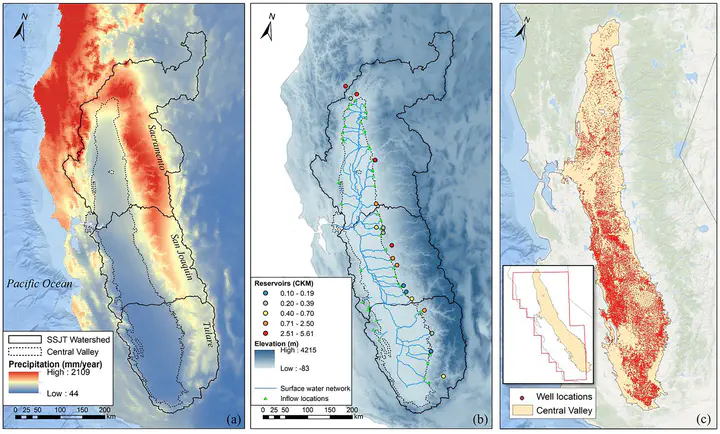Post‐Drought Groundwater Storage Recovery in California's Central Valley
Abstract
Groundwater depletion is a major threat to agricultural and municipal water supply in California’s Central Valley. Recent droughts during 2007–2009 and 2012–2016 exacerbated chronic groundwater depletion. However, it is unclear how much groundwater storage recovered from drought-related overdrafts during post-drought years, and how climatic conditions and water management affected recovery times. We estimated groundwater storage change in the Central Valley for April 2002 through September 2019 using four methods- GRACE satellite data, a water balance approach, a hydrologic simulation model, and monitoring wells. We also evaluated the sensitivity of drought recovery to different climate scenarios (recent climate ± droughts and future climate change scenarios- 20 GCMs and 2 RCPs) using water balance method and statistical sampling of historical climate data. Estimated Central Valley groundwater loss during the two droughts ranged from 19 km3 (2007–2009) to 28 km3 (2012–2016) (median of four methods). Median aquifer storage recovery was 34% and 19% of the overdraft during the 2010–2011 and 2017–2019 post-drought years, respectively. Numerical experiments show that recovery times are sensitive to climate forcing, with longer recovery times for a future climate scenario that replicate historical climatology relative to historical forcing with no droughts. Overdraft recovery times decrease by ∼2× with implementation of pumping restrictions (30th to 50th percentiles of historical groundwater depletion) to constrain groundwater depletion relative to no restrictions with a no-drought future climatology. This study highlights the importance of considering water management implications for future drought recoveries within the context of climate change scenarios.
